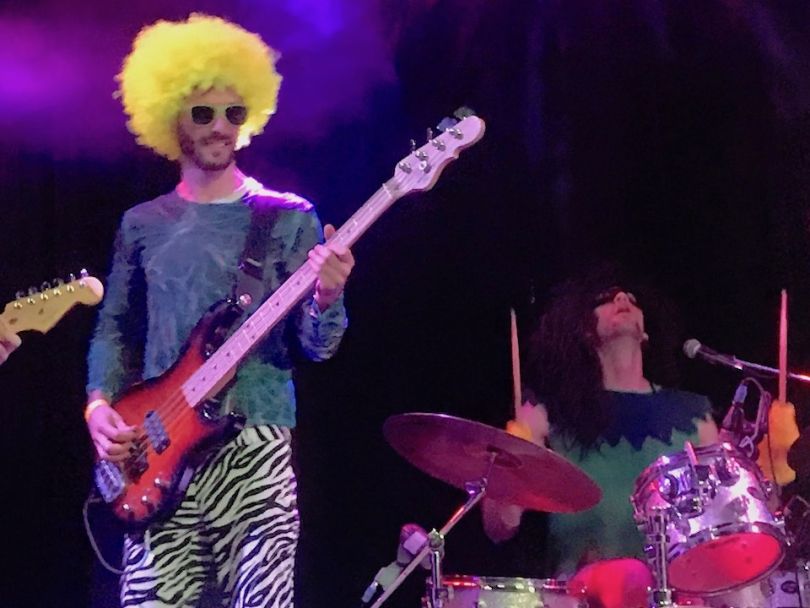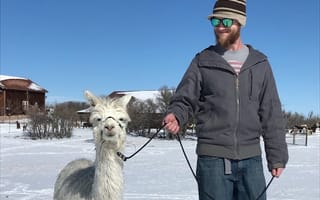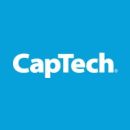In any career that requires hours behind a computer screen, finding a healthy, happy work-life balance is imperative. And there are few roles for which that’s more true than developers. As notoriously quirky individuals, it’s no surprise that some Colorado techies have adopted some pretty unique hobbies.
We caught up with five local software engineers to talk about the ways they unwind after a long day at the office — and their answers are sure to surprise you.

Nic Judson is a software engineer in test at Zen Planner. While his day job revolves around analyzing tech, his free time is spent outside — hanging with his alpacas. Judson breeds and raises the animals to spin their fleece into yarn. He shared how he first got into alpaca ranching and how it balances out his days sitting at a desk.
Which came first, engineering or alpacas?
Engineering came first, I always liked math and science and graduated college with a computer science degree. After about four years of cubicle life at a large financial company, I decided I needed to get outside and do something with animals. My mom invited me to check out an alpaca show just as something fun to do and I fell in love almost instantly. They’re such unique animals and I like that they’re raised for their fleece instead of their meat.
My mom invited me to check out an alpaca show just as something fun to do and I fell in love almost instantly."
What’s your favorite story about your alpacas?
One of my favorite moments was my first time in the show ring with my first baby alpaca. She took second place in her show class, beating out some much larger ranches.
What are some of the similarities and differences between raising alpacas and testing software?
Alpaca ranching is very different than programming because you’re outside with a physical animal, not inside manipulating virtual information. They’re similar in that spinning yarn uses a standard method with a little creativity to get the most out of the fleece — just like applying a design pattern plus some creativity is how you build out an efficient codebase.
There’s lots of trial and error in programming as well as alpaca breeding. The difference there is you have to wait a lot longer to get the results from your breeding decision than you do from an automated test suite. Once you get your results though, you do a similar analysis of what went right, what went wrong, and what you can do on the next run to get a more favorable output.

Techie by day and home beer brewer by night, Shutterstock software engineer John Flaherty embodies the Colorado lifestyle. He brews all different styles of beer, but his current favorites are New England-style IPAs, sours and porters/stouts. He’s won several awards for his concoctions and plans on entering three brews in the National Homebrew Competition held in Boulder in June.
Which came first, engineering or home brewing?
I got into home brewing in early January 2012 after talking to a friend about it. Engineering technically came first, but I have always enjoyed cooking and chemistry with food, even as a teenager.
What’s your favorite beer brewing story?
There's a lot that can go wrong with many gallons of boiling liquid, but my favorite story is from Winter 2015 when I brewed a chai spiced porter for my wife. It had snowed the week prior and was probably 15-20 degrees outside. When it came time to cool the boiling hot liquid, I hooked up the chiller and turned the water valve but no water came out. I looked at the water pipe and realized it was completely frozen! To improvise a cooling system, I gathered up all the snow in the yard that I could, stuck the pot in it and covered it in snow to cool down. Thirty minutes later, the beer cooled down to the correct 70 degrees. It was scary because I could have ruined the beer but a funny memory nonetheless.
Process is the main component in both engineering and home brewing; without it neither would work."
What are some of the similarities and differences between brewing beer and developing software?
Process is the main component in both engineering and home brewing; without it neither would work for very long or be very good. In home brewing, if you don't follow process during mashing, boiling, chilling, fermenting or packaging, it can cause infected or bad-tasting beer. Same goes for software; if you don't have some kind of process, you'll miss deadlines and have a bug-ridden product.
However, brewing is a mostly straightforward process, using your hands to create a product you can see, touch, smell, taste and feel. Software development is anything but straightforward (most of the time), and if the end product isn’t great, you might be able to cover it with nice design. With beer, if it's bad, it's bad.

Behind a computer, Dave Weinstock is an expert frontend developer for FRONTSTEPS. But behind a bass guitar, he’s a local punk rock legend. Weinstock plays electric bass in a band called Pet Predator. He talked about his love for music and how it translates to writing code.
Which came first, engineering or rocking out?
This hobby started before my career in software development. I’ve been playing bass for over 10 years, but only started playing in this band about three years ago. At my previous job, I mentioned that I was a bass player looking for people to jam with, and there happened to be a co-worker in need of a bass player for his band.
Writing music and software both require lots of practice and creativity."
Tell us about your most memorable show.
Whenever we play a gig, we all go to a thrift store a day or so before and buy the most ridiculous outfits we can find to wear on stage. The zebra print capris were pretty tight. I ended up wearing them the rest of the night out after the show because I couldn’t find my regular pants after we packed up all the band gear.
What are some of the similarities and differences between your hobby and your job?
Writing music and software both require lots of practice and creativity. Luckily, software development does not require dressing in silly outfits.

Jim Lambert knows a thing or two about agility — both in a business and on the field. He’s the director of agile transformation for CapTech, and he also happens to play in the National Adult Baseball Association. Lambert explained how his two passions go hand in hand.
Which came first, engineering or baseball?
Baseball has been a part of my life since I was six, so it was just a few years later that I started consulting. I played baseball until I was 25 years old, but put it aside for many years after getting married and starting a family. I got back into baseball with this team about eight years ago.
What’s your fondest memory of baseball?
There’s nothing quite like opening day in Colorado. To step up to the plate for the first pitch and see the snow-capped peaks out over the infield — to be able to do that fills me with a deep sense of gratitude every year I’m able to keep doing what I do.
The biggest difference is that agility on the baseball field goes down as you get older while the agility of the teams we work with improves continuously."
What are some of the similarities and differences between your hobby and your job?
Since I’m an agile transformation consultant, the parallels between baseball and my work are many. Agility is definitely needed to play the game. You have to be prepared for any possible outcome but have to adapt and adjust quickly and gracefully depending on what happens on any given pitch. The biggest difference is that agility on the baseball field goes down as you get older while the agility of the teams we work with improves continuously!

Mike Brevoort is the CTO of Robots and Pencils and founder of Missions.ai. As a technology leader, Brevoort is no stranger to speaking in front of a crowd — and he uses that talent outside the office too. When he’s not busy inspiring his company’s “robots,” you can find him inspiring the masses as the master of ceremonies at local running events.
Which came first, engineering or MCing?
Three years ago, my wife Jeanie and her friend Sarah started Stridemob, a new Colorado race company that puts on running events that are positive and focused on community, inclusion and the racer experience.
My career in tech has provided many opportunities to speak in front of large groups of people, so Jeanie asked if I would MC their first race. I agreed, and the rest is history.
What’s your favorite race story?
Last month, I had the opportunity to kick off the Zackari Parrish 5K that raised over $80,000 for the Parrish Family and the Douglas County Fallen Officers Fund. I got to stand on top of the 92.5 "The Wolf" Suburban at the start line and address a crowd of 4,200 people. It was exhilarating and humbling to represent the community, professing support for first responders and their families.
What are some of the similarities and differences between your MCing and leading a tech team?
When I first stood before a crowd of racers, I felt tongue-tied and had no idea what to say. At tech conferences or presentations there’s always a clear topic and purpose.
When it's all said and done, it's always more about the people and the impact you have on their lives."
In software, everything revolves around creativity and solving problems. I decided to approach it like a user experience problem to be solved. I was able to design a new playbook for starting races. Inspired by the JSConf events organized by Chris Williams, we take a "family picture" before each race. I systematically figured out which songs had a more energizing effect and made people feel good. And like work, when it's all said and done, it's always more about the people and the impact you have on their lives.









